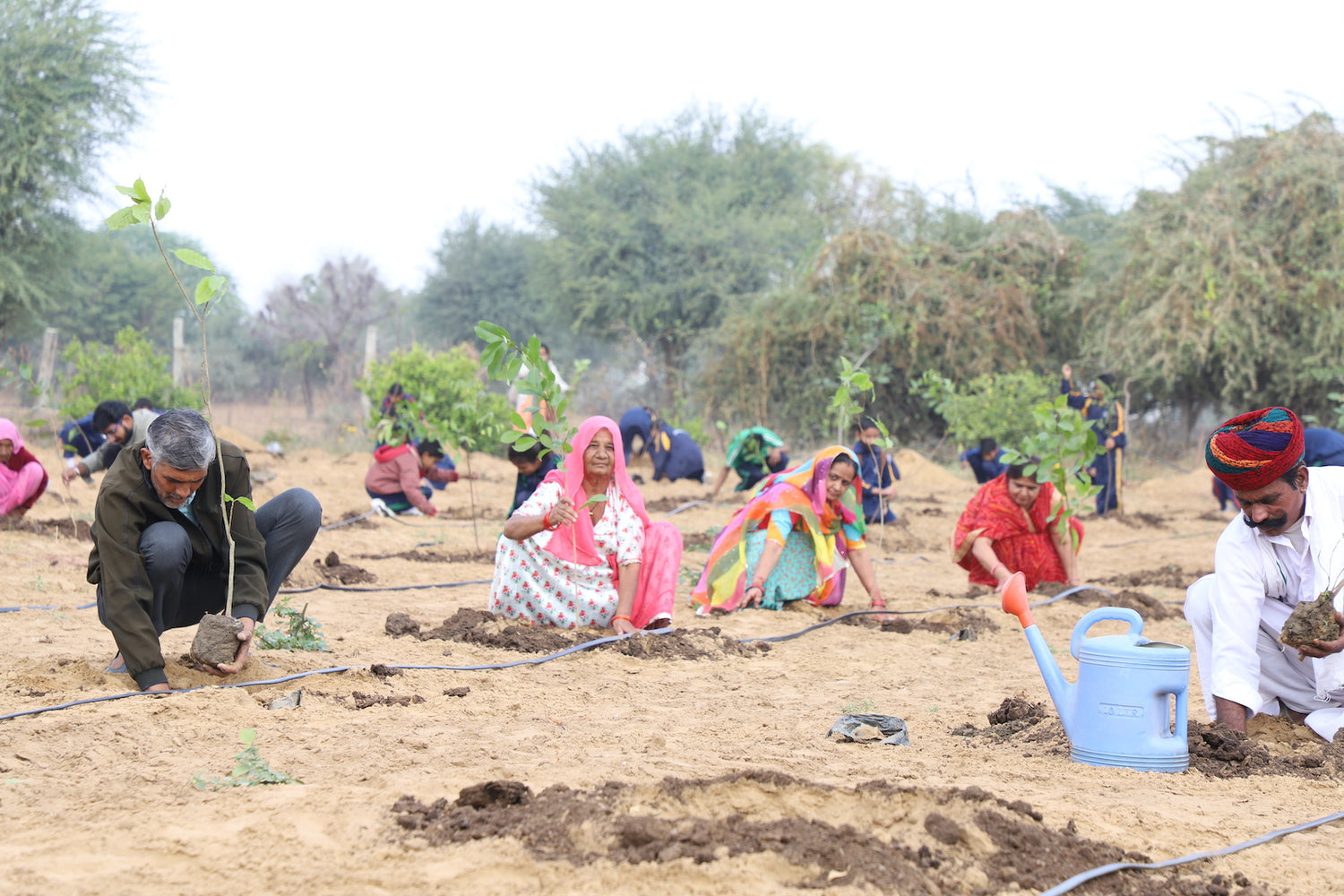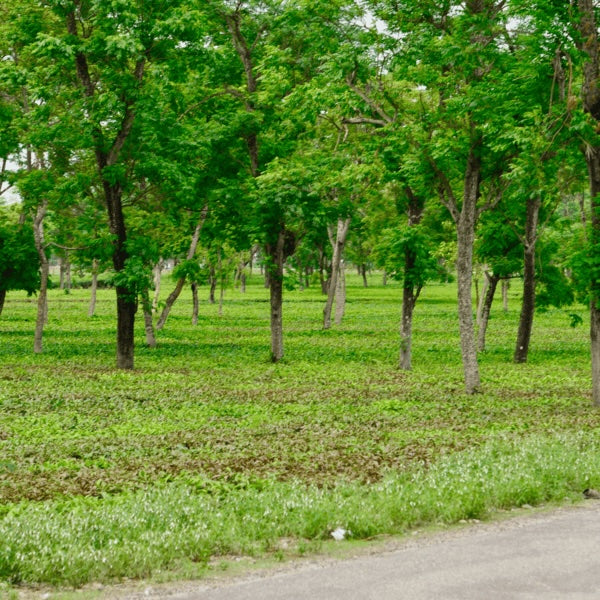Carbon Footprint of Packaged Snacks vs Home-Cooked Food
Carbon Footprint of Packaged Snacks vs Home-Cooked Food Engaging Introduction In a world increasingly aware of climate change, the choices we make in Read more
Connect with us
-
👥 Corporates
If you are looking for:
- 🌲 Tree Plantation Events
- 📊 CSR Projects
📧 corporate@growbilliontrees.com
📞 +91 9699723523
💬 +91 9325931304 WhatsApp (Only)
🕒 Mon - Sat | 10am - 7pm IST
-
🧩 Tree Plantation NGOs
If you are looking for:
- 💰 Financial Assistance
- 🤝 Operational Support
📧 support@growbilliontrees.com
📞 +91 9699723523
💬 +91 9325931304 WhatsApp (Only)
🕒 Mon - Sat | 10am - 7pm IST
-
🌼 Individuals
If you are looking for:
- 👥 Group Tree Plantation Drive
- 🌳 Bulk Tree Plantation
📞 +91 9699723523
💬 +91 9325931304 WhatsApp (Only)
🕒 Mon - Sat | 10am - 7pm IST
Trending
Trees for Corporates
Carbon Footprint of Packaged Snacks vs Home-Cooked Food
Engaging Introduction
In a world increasingly aware of climate change, the choices we make in our daily lives can have a significant impact on our planet. One area that often goes unnoticed is the carbon footprint of our food, particularly when comparing packaged snacks to home-cooked meals. Understanding this difference is crucial, as it not only affects our health but also the health of our environment.
What is Grow Billion Trees Team?
The Grow Billion Trees Team is a global initiative dedicated to combating climate change through reforestation. By planting trees, we can absorb carbon dioxide from the atmosphere, helping to mitigate the effects of global warming. This team works tirelessly to raise awareness about the importance of trees in our ecosystem and encourages individuals and communities to take action.
Why Grow Billion Trees Team Matters for the Planet
Every tree planted is a step towards a healthier planet. The Grow Billion Trees Team inspires individuals to contribute to a greener future, emphasizing that collective action can lead to significant change. By supporting reforestation efforts, we can restore habitats, improve air quality, and combat climate change, making a lasting impact for generations to come.
Factors Contributing to Carbon Footprint
- Production: The methods used to grow and harvest ingredients for packaged snacks often involve high energy consumption and chemical fertilizers.
- Transportation: Packaged snacks are typically transported over long distances, contributing to greenhouse gas emissions.
- Packaging: The materials used for packaging snacks, such as plastic and aluminum, have their own carbon footprints due to manufacturing processes.
- Waste: Packaged snacks often lead to more waste, as packaging materials are frequently discarded rather than recycled.
- Cooking Methods: Home-cooked meals can be prepared using energy-efficient methods, reducing overall emissions.
Example Calculation
To illustrate how carbon footprints are measured, let’s consider a simple example:
- Imagine you buy a packaged snack that has traveled 500 km to reach your store. The average emission factor for transportation is about 0.1 kg CO₂ per km.
- Calculation: 500 km × 0.1 kg CO₂/km = 50 kg CO₂ emitted just for transportation.
- If you cook a meal at home using local ingredients, let’s say you use 2 kg of vegetables that have a carbon footprint of 0.5 kg CO₂ per kg.
- Calculation: 2 kg × 0.5 kg CO₂/kg = 1 kg CO₂ emitted for the home-cooked meal.
In this example, the packaged snack has a significantly higher carbon footprint than the home-cooked meal.
Tips to Reduce Carbon Footprint
- Choose Local Ingredients: Opt for locally sourced produce to minimize transportation emissions.
- Cook in Batches: Prepare meals in larger quantities to save energy and reduce waste.
- Reduce Packaging: Buy in bulk or choose products with minimal packaging.
- Compost Food Waste: Instead of throwing away scraps, compost them to enrich the soil and reduce landfill waste.
- Use Energy-Efficient Appliances: Invest in energy-efficient cooking appliances to lower your energy consumption.
FAQs
1. What is a carbon footprint?
A carbon footprint is the total amount of greenhouse gases, particularly carbon dioxide, that are emitted directly or indirectly by an individual, organization, or product throughout its lifecycle.
2. How do packaged snacks compare to home-cooked meals in terms of carbon footprint?
Packaged snacks generally have a higher carbon footprint due to factors like transportation, production methods, and packaging materials, while home-cooked meals can be more sustainable if made with local ingredients.
3. How can I calculate the carbon footprint of my meals?
You can calculate the carbon footprint by considering the distance ingredients travel, the emissions associated with their production, and the energy used in cooking. Various online calculators can help simplify this process.
4. Why is tree planting important for reducing carbon footprints?
Tree planting is vital because trees absorb carbon dioxide from the atmosphere, helping to offset emissions and combat climate change. They also provide habitats for wildlife and improve air quality.
Conclusion with Call to Action
Understanding the carbon footprint of our food choices is essential for making informed decisions that benefit both our health and the environment. By choosing home-cooked meals over packaged snacks, we can significantly reduce our carbon emissions. Join the movement and plant trees with Grow Billion Trees to offset your footprint. Together, we can create a sustainable future for our planet.
You may like
Packaged Snacks Environmental Impact
that bag of chips you devoured might have a more extensive travel history than you! The energy used in manufacturing, transporting, and storing these snacks adds up, making them a guilty pleasure for the eco-conscious. So, next time you reach for that shiny bag, consider the environmental cost. Is it worth the crunch?
Home-Cooked Food Carbon Emissions
Ah, the joys of home-cooked meals! Not only do they warm the heart, but they also tend to have a lighter carbon footprint compared to their packaged counterparts. When you whip up a meal in your kitchen, you control the ingredients, the sourcing, and the energy used. Plus, you can skip the plastic packaging that often accompanies store-bought snacks. Cooking at home can be a delightful way to reduce emissions while impressing your friends with your culinary prowess. So, grab that apron and channel your inner chef—your taste buds and the planet will thank you!
Sustainable Snack Alternatives
If you’re looking to munch without the guilt, sustainable snack alternatives are your best friends! Think nuts, seeds, and dried fruits—nature’s candy without the carbon baggage. These snacks often come with minimal packaging and can be sourced locally, reducing transportation emissions. Plus, they’re packed with nutrients, making them a win-win for your health and the environment. So, next time you’re at the store, consider reaching for a bag of trail mix instead of those neon-colored chips. Your body and the Earth will be doing a happy dance!
Carbon Footprint of Food Packaging
food packaging! It’s the invisible villain that adds layers of carbon emissions to our beloved snacks. From plastic wrappers to cardboard boxes, the production and disposal of packaging materials contribute significantly to our overall carbon footprint. The irony? We often focus on the food itself while overlooking the environmental impact of how it’s wrapped. So, when you’re snacking, remember that less is more—opt for products with eco-friendly packaging or, better yet, go for bulk options. Your snacks can be delicious and sustainable!
Local vs. Imported Snacks
The debate between local and imported snacks is a tasty one! Local snacks often have a smaller carbon footprint since they don’t have to travel far to reach your plate. Imported snacks, on the other hand, might be exotic and exciting but come with a side of hefty emissions from transportation. So, while that bag of chips from halfway across the globe might be calling your name, consider the local alternatives that can satisfy your cravings without the environmental guilt. Supporting local businesses not only helps the planet but also gives you a chance to discover hidden gems in your own backyard!
Nutritional Value Comparison
When it comes to snacks, it’s not just about the carbon footprint; nutritional value matters too! Home-cooked meals often pack a nutritional punch, allowing you to control what goes into your food. In contrast, many packaged snacks are laden with preservatives, sugars, and unhealthy fats. So, while you might be tempted by the convenience of a pre-packaged treat, remember that a little effort in the kitchen can lead to healthier choices. Plus, cooking at home can be a fun experiment—who knows, you might just invent the next big snack sensation!
Corporate Plantations
FAQ
What is the carbon footprint of packaged snacks compared to home-cooked food?
The carbon footprint of packaged snacks is generally higher than that of home-cooked food. This is due to the energy-intensive processes involved in manufacturing, packaging, and transporting snacks. Home-cooked meals, especially when using local ingredients, tend to have a lower carbon footprint, as they require less processing and packaging.
How can I reduce the carbon footprint of my snacks?
To reduce the carbon footprint of your snacks, opt for locally sourced ingredients, choose bulk packaging, and minimize processed foods. You can also make your own snacks at home, which not only cuts down on emissions but also adds a personal touch to your munchies.
Are there eco-friendly packaged snacks available?
Yes, there are eco-friendly packaged snacks available! Look for brands that prioritize sustainable sourcing, biodegradable packaging, and minimal processing. These snacks can satisfy your cravings while keeping Mother Earth happy.
What role does transportation play in the carbon footprint of snacks?
Transportation significantly contributes to the carbon footprint of snacks. The longer the distance snacks travel from production to your plate, the higher the emissions. Choosing locally produced snacks can help reduce this impact and support local economies.
Is home-cooked food always better for the environment?
While home-cooked food generally has a lower carbon footprint, it depends on the ingredients used. If you’re using imported or heavily processed items, the environmental benefits may diminish. Focus on seasonal, local produce for the best eco-friendly impact.
How can I make my home-cooked meals more sustainable?
To make your home-cooked meals more sustainable, use seasonal and local ingredients, reduce food waste, and compost scraps. Also, consider energy-efficient cooking methods to further lower your carbon footprint while whipping up delicious dishes.
What are the health benefits of choosing home-cooked food over packaged snacks?
Home-cooked food often contains fewer preservatives, additives, and unhealthy fats compared to packaged snacks. Cooking at home allows you to control ingredients, making it easier to create nutritious meals that are better for your health and the planet.
Can I still enjoy snacks while being eco-conscious?
Absolutely! You can enjoy snacks while being eco-conscious by choosing sustainable options, making your own treats, or selecting brands that prioritize environmental responsibility. Snack smartly, and you’ll be a hero for both your taste buds and the planet!























